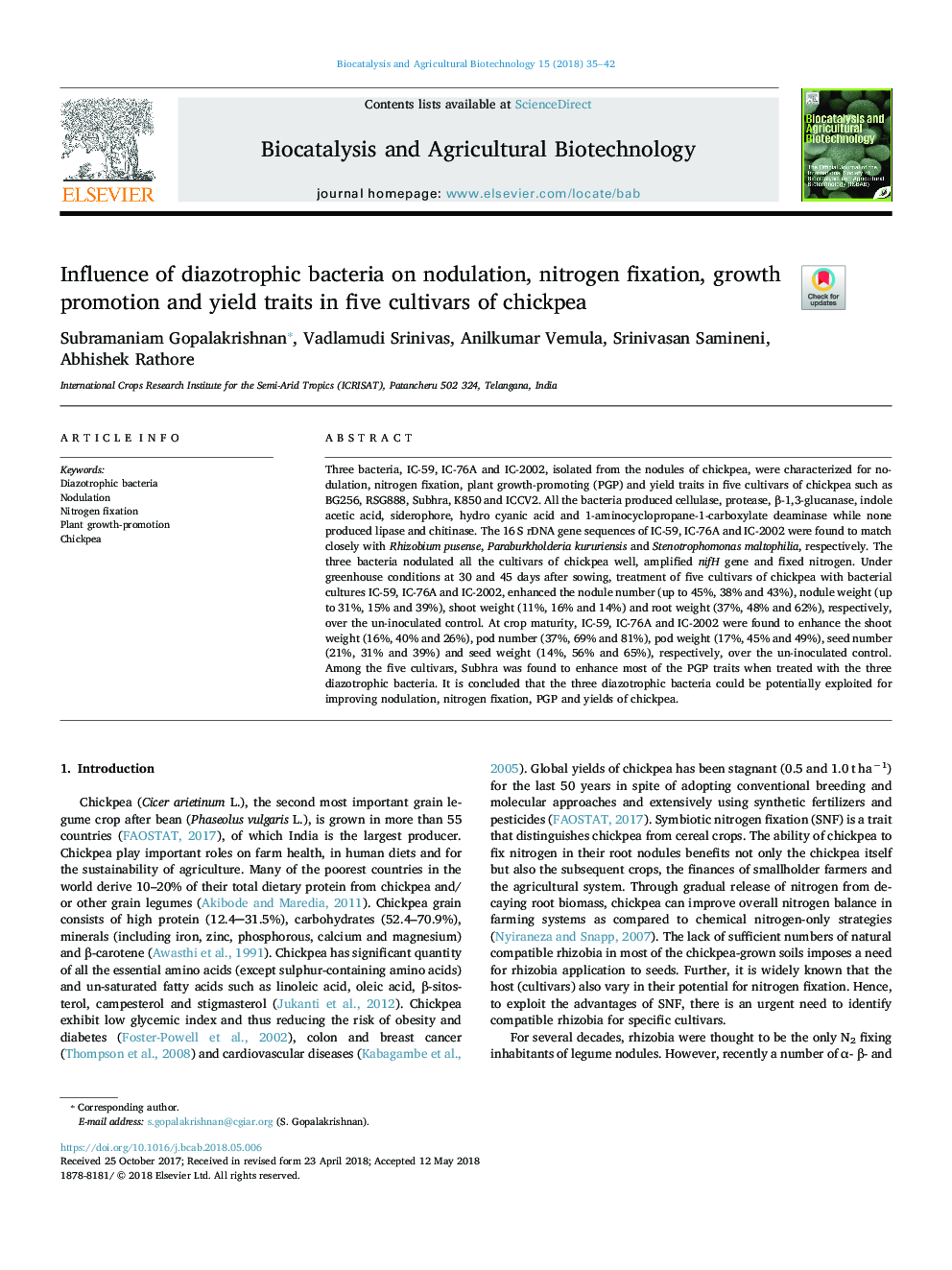| Article ID | Journal | Published Year | Pages | File Type |
|---|---|---|---|---|
| 8405572 | Biocatalysis and Agricultural Biotechnology | 2018 | 8 Pages |
Abstract
Three bacteria, IC-59, IC-76A and IC-2002, isolated from the nodules of chickpea, were characterized for nodulation, nitrogen fixation, plant growth-promoting (PGP) and yield traits in five cultivars of chickpea such as BG256, RSG888, Subhra, K850 and ICCV2. All the bacteria produced cellulase, protease, β-1,3-glucanase, indole acetic acid, siderophore, hydro cyanic acid and 1-aminocyclopropane-1-carboxylate deaminase while none produced lipase and chitinase. The 16â¯S rDNA gene sequences of IC-59, IC-76A and IC-2002 were found to match closely with Rhizobium pusense, Paraburkholderia kururiensis and Stenotrophomonas maltophilia, respectively. The three bacteria nodulated all the cultivars of chickpea well, amplified nifH gene and fixed nitrogen. Under greenhouse conditions at 30 and 45 days after sowing, treatment of five cultivars of chickpea with bacterial cultures IC-59, IC-76A and IC-2002, enhanced the nodule number (up to 45%, 38% and 43%), nodule weight (up to 31%, 15% and 39%), shoot weight (11%, 16% and 14%) and root weight (37%, 48% and 62%), respectively, over the un-inoculated control. At crop maturity, IC-59, IC-76A and IC-2002 were found to enhance the shoot weight (16%, 40% and 26%), pod number (37%, 69% and 81%), pod weight (17%, 45% and 49%), seed number (21%, 31% and 39%) and seed weight (14%, 56% and 65%), respectively, over the un-inoculated control. Among the five cultivars, Subhra was found to enhance most of the PGP traits when treated with the three diazotrophic bacteria. It is concluded that the three diazotrophic bacteria could be potentially exploited for improving nodulation, nitrogen fixation, PGP and yields of chickpea.
Related Topics
Life Sciences
Agricultural and Biological Sciences
Agricultural and Biological Sciences (General)
Authors
Subramaniam Gopalakrishnan, Vadlamudi Srinivas, Anilkumar Vemula, Srinivasan Samineni, Abhishek Rathore,
